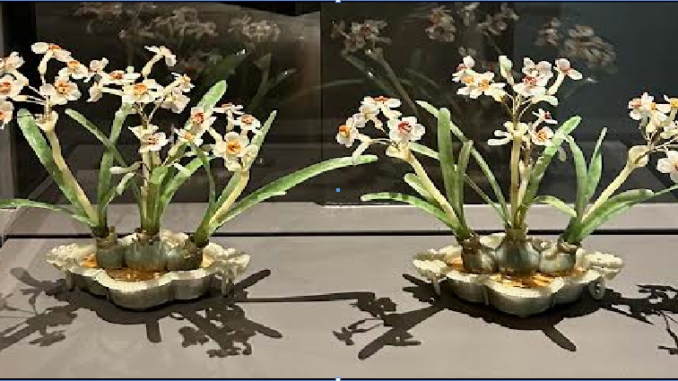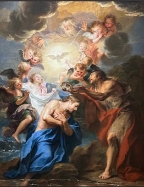
Charlotte Levy
Arts Editor
The Los Angeles County Museum of Art (LACMA) presented the transformation of a seemingly bland object, stone, into a stunning subject for art in the exhibit “Eternal Medium: Seeing the World in Stone.”
The new exhibit features diverse pieces of art, composed of varying mediums as well as highlighting different subjects. The diversity of the art allows the viewer to focus on the common component between the pieces: stone. Connecting this material, which dates back to the creation of the Earth, to modern audiences allows viewers to feel a personal connection to even the most extravagant pieces.
The exhibit’s largest piece, “Draped Marble” by Analia Saban, fascinated audiences with marble slabs hanging over a wooden sawhorse. Saban’s work with marble, a very durable material, as pliable and flexible is an eye-catching choice. This unusual feature of marble allows viewers to think outside the box when browsing the works of “Eternal Medium.”
Johann Christian Neuber’s “Box” projects the lid of a neo-classical box with a Greek head statue in its center surrounded by gold-encrusted pearls and stones on the southwall. The projection of the box allows audiences to explore the fine and dazzling details of the piece, which are easily overlooked when the box is viewed in its traditional form. The marbling of the precious gems displayed in “Box” contrasted starkly with the rougher, yet equally gorgeous, stones in other artworks.
While some art pieces featured a variety of different stones, others focused on the diverse qualities of a single gemstone, like “Pair of Bowls With Narcissus.” Originating in China, this sculpture utilizes the different colors of jade to distinguish between the stems, petals, leaves, and the bowl. The artist mimics the beauty of flowers through the breathtaking appearance of carved jade.
Wilhelm Fistulator’s “Architectural Scene and Frame” put a twist on what appears to be a traditional painting at first sight. Fistulator carved complex details to bring the scene to life, transporting viewers to 17th-century Germany. This plaque illustrates the Munich royal court, where Fistulator’s father designed the interior with rounded stone archways and checkerboard floors. The gold frame, adorned with intricate designs, elevates the prestige of the work without distracting from the interior of the piece.

Viewers are able to explore their own identities through the collection of varying art pieces. The exhibit had art for everyone, allowing viewers to see their own stories, messages, and meanings reflected in the stone. LACMA tends to curate beautiful, yet niche exhibits, with, “Eternal Medium” being enjoyable and inclusive for all.
“Seeing the World in Stone” opened Aug. 20 and will be available for viewing until Feb. 11 in the Resnick Pavilion in LACMA. For more information visit lacma.org.


Leave a Reply